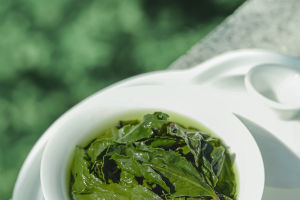Growing Figs at Home
Growing figs at home can be a delightful journey, offering a steady supply of sweet, juicy fruits right from your garden or balcony.
While they're often associated with Mediterranean climates, fig trees are surprisingly versatile and can thrive in a range of settings.
In this guide, we'll break down the basics to get you started on growing figs, whether you have a sunny backyard or just a small pot in your kitchen.
Choosing the Right Fig Variety
The first step in fig gardening is selecting a variety suited to your space and climate. Here are some common options to consider:
- Brown Fig: A popular variety for beginners, it's hardy, productive, and does well in cooler climates.
- Celeste: Known for its sweet taste, this type grows well in warmer areas but can adapt to pot growing.
- Chicago Hardy: As its name suggests, this fig can survive in colder regions, tolerating temperatures as low as -10°F.
- Black Mission: If you live in a very warm area, this Mediterranean classic will flourish and produce rich, dark fruits.
Ideal Growing Conditions for Figs
Figs need warmth, sunlight, and well-draining soil to thrive. Here are some basic requirements:
- Sunlight: Figs are sun-lovers! They need at least six to eight hours of sunlight daily to produce abundant, flavorful fruit.
- Soil: Figs prefer slightly acidic to neutral soil, with a pH of around 6.0-6.5. Well-draining soil is essential to prevent root rot.
- Watering: Figs do well with moderate watering. Keep the soil moist but never soggy, especially when the tree is young.
Growing Figs in Pots vs. in the Ground
Fig trees can adapt to both pots and garden planting, each with its considerations.
- Growing in Pots: For those with limited space potted figs are a great option. Choose a pot at least 18 inches in diameter and ensure it has drainage holes. Pots allow you to move your fig tree indoors if the weather becomes too cold.
- Planting in the Ground: If you have more space, planting directly in the garden allows fig roots to spread and often results in a larger yield. However, keep in mind that figs can be invasive, so plant at least 20 feet from other trees or structures.
Basic Fig Tree Care
To keep your fig tree healthy and productive, it's essential to provide the right care.
- Fertilizing: Figs don't need heavy fertilization. For outdoor trees, a light application of balanced fertilizer in early spring is usually sufficient. For potted figs, use a diluted fertilizer every month during the growing season.
- Pruning: Pruning helps fig trees grow strong and produce more fruit. For young trees, shape them by pruning in late winter. Remove any dead or crossing branches and aim to create an open structure that allows sunlight and air to reach all parts of the plant.
- Pest Control: Fig trees are relatively pest-resistant, but they can attract common garden pests like aphids and mites. Use organic insecticides or a mild soap spray to control these if necessary.
Harvesting Figs
Figs are ready to pick when they soften and droop slightly on the tree. Since figs don't ripen after being picked, make sure they're fully ripe before harvesting. A ripe fig will yield slightly when squeezed and may have a sweet aroma. Harvest carefully by hand to avoid bruising, and enjoy them fresh for the best flavor.
Winterizing Your Fig Tree
In regions with cold winters, you'll need to protect your fig tree to ensure it survives.
- Bringing Potted Figs Indoors: If your tree is in a pot, bring it indoors or to a sheltered area when temperatures drop below 20°F.
- Mulching and Wrapping Outdoor Trees: For in-ground trees, add a thick layer of mulch around the base to insulate the roots. In colder areas, consider wrapping the trunk and lower branches with burlap to protect against frost.
Common Challenges and Solutions
While figs are relatively low-maintenance, beginners may encounter a few common issues.
- Yellow Leaves: Often caused by overwatering, ensure your tree has adequate drainage, and reduce watering frequency.
- No Fruit Production: This may be due to a lack of sunlight or the tree's young age. Most fig trees take a couple of years to begin producing.
- Birds and Squirrels: Fig fruits are irresistible to wildlife. Consider covering your tree with netting during fruiting season to protect your harvest.
Enjoying Your Homegrown Figs
The reward for your care is the sweet, nutritious fruit you'll enjoy each year. Fresh figs are delicious in salads, desserts, or just eaten on their own. With proper care, your fig tree can produce fruit for decades, making it a delightful addition to any home garden.
GROW YOUR OWN FIGS IN POTS
Video by New Garden Road


